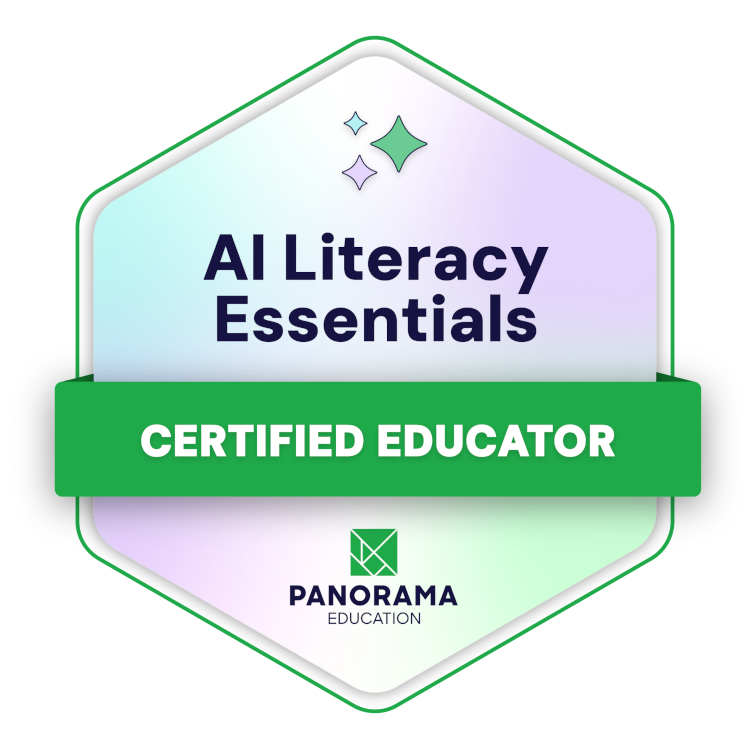Educational technology (Edtech) is reshaping classrooms—making learning more interactive, personalized, and accessible. In fact, by 2025, the global Edtech market is expected to reach $252 billion.
For schools, the challenge isn’t just adopting technology—it’s choosing the right tools. The most effective Edtech solutions align with curriculum goals, support teachers in monitoring student progress, and deliver clear insights into student needs.
When districts fully understand what Edtech can offer, they’re better equipped to make strategic decisions that drive real impact in the classroom.
What is Edtech?
Edtech refers to the use of digital tools by schools and districts to support instruction, assessment, and day-to-day operations. These tools help educators organize materials, monitor student progress, and strengthen connections between teachers, students, and families. Common types of Edtech include:
- Learning Management Systems (LMS): Platforms like Google Classroom and Canvas help store assignments, manage coursework, and streamline communication between teachers and students.
Artificial Intelligence (AI): Secure AI tools assist districts in analyzing student data, identifying trends, and coordinating academic and behavioral support. - Immersive Technologies: Tools such as Virtual Reality (VR), Augmented Reality (AR), and gamified learning environments create engaging, hands-on lessons that reinforce key concepts.
Adaptive Learning Software: These platforms personalize instruction by adjusting content and pacing in real time based on each student’s performance. - Collaboration Tools: Features like online discussion boards, video conferencing, and peer review platforms support real-time collaboration and feedback among students and educators.
8 Major Benefits of Edtech in 2025
There was a time when educational technology simply meant digital whiteboards and eBooks. Today, it encompasses everything from AI-powered personalization to adaptive platforms that adjust lessons in real time based on student progress, along with online tools that strengthen connections between educators and learners. These advancements help schools streamline instruction, monitor student growth, and create dynamic, engaging learning experiences.
Consider the following major benefits:
Enhanced Privacy & Security: Edtech tools are evolving to better protect student data and promote responsible technology use:
- Strong Data Protection: Tools prioritize data security and privacy.
- Privacy Safeguards: Built-in protections support safe digital learning environments.
- Parental Controls & Monitoring: Help create a safe, age-appropriate online experience.
- Adaptive Assessments: Questions adjust based on student performance.
- Student-Centered Learning Paths: Let students move at their own pace.
- Instant Feedback: Interactive tools help learners monitor their progress.
- Data-Informed Teaching: Teachers can adjust instruction based on real-time data.
- Gamified Learning: Points, badges, and challenges boost motivation.
- Behavioral Insights: Platforms track engagement and suggest re-engagement strategies.
Improved Student Engagement: Edtech brings learning to life through interactivity and real-world relevance:
- Gamification: Leaderboards and rewards encourage participation.
- VR & AR Experiences: Immersive lessons bring concepts to life.
- Simulations & Role-Playing: Let students safely explore scenarios and decision-making.
- Interactive Content: Videos, drag-and-drop exercises, and digital storytelling deepen learning.
- Collaborative Learning Spaces: Enable discussion, teamwork, and peer feedback.
- Project-Based Learning: Tools help students manage timelines and reflect on their work.
- Real-World Applications: Connects classroom learning to future careers and challenges.
- Screen Time Awareness: Helps balance digital learning with intentional use.
Supporting Educators: Technology empowers teachers with data, collaboration tools, and professional growth
- Student Support Planning: Track interventions and progress over time.
- Data-Informed Insights: View attendance, academics, and behavior in one place.
- Professional Development: On-demand training, certifications, and resource libraries.
- Collaboration Tools: Share strategies, co-plan lessons, and support peer learning.
- Classroom Management Software: Monitor participation and streamline activities.
- Parent-Teacher Communication: Automated updates keep families informed and involved.
Expanding Access to Education: Edtech can help to bridge gaps in access and opportunity.
- Mobile Learning Platforms: Let students complete work from any location.
- Hybrid & Remote Learning: Support flexible, personalized instruction.
- Global Classrooms: Connect students across geographies for shared learning.
- On-Demand Learning: Students can pause, review, and resume when needed.
- Micro-learning Modules: Bite-sized lessons help with retention and accessibility.
Strengthening School Data Systems: Digital tools give educators and leaders a clearer picture of student progress:
- Student Support Indicators: Identify at-risk students using key data points.
- Centralized Data Dashboards: Bring together attendance, grades, behavior, and more.
- Predictive Analytics: Spot trends early and take proactive steps.
- Strategic School Planning: Use data to guide resource allocation and instruction.
- Assessment Tools: Measure learning consistently across classrooms and schools.
- Student Progress Reports: Keep families and teachers aligned on growth.
- Benchmarking: Compare progress over time or across student groups.
Increasing Digital Footprints & Hybrid Learning: Flexible learning models meet the needs of today’s students.
- Blended Learning: Combines online and in-person instruction.
- Digital Portfolios: Showcase student growth over time.
- Microlearning: Short, focused content improves engagement and retention.
- Sustainable Solutions: Digital textbooks and resources reduce costs and waste.
Accessibility: Design ensures all students have access to learning.
- Translation & Language Support: Real-time translation and multilingual interfaces.
- Adaptive Tools for Students With Disabilities: Adjustable settings meet a range of student needs.
- Assistive Technology: Tools like speech-to-text and Braille displays enable access.
- Flexible Schedules: Self-paced learning supports students with varied needs and responsibilities.
Looking Ahead
Edtech continues to evolve, offering innovative tools to support both teaching and learning. As districts adopt these emerging technologies, they’ll need clear, actionable insights to ensure each tool enhances instruction, improves the student experience, and aligns with their broader educational goals.
Future Trends in Edtech
- Smarter Student Support: Chat-based tools and personalized learning platforms will enable educators to deliver more targeted, real-time academic support tailored to each student’s needs.
- Expanding Hybrid Learning: Schools will continue to refine blended models that combine online and in-person instruction, offering students greater flexibility and access to learning.
- Focus on Data Privacy and Ethics: As technology use grows, districts will place even greater emphasis on responsible tech adoption, prioritizing student data protection and ethical practices.
The Role of Educators
- Technology as a Teaching Tool: While digital resources can enhance instruction, they are most effective when paired with strong student-teacher relationships. Human connection remains at the heart of meaningful learning.
- Ongoing Professional Learning: To maximize the impact of Edtech, schools must invest in ongoing training that empowers educators to integrate technology confidently and effectively.
- Balancing Tech and Traditional Learning: The most successful classrooms will strike a balance—leveraging technology to complement, not replace, proven instructional strategies.
Challenges to Address
- Maintaining Human Connection: As digital tools streamline instruction, it’s essential to preserve the meaningful relationships between educators and students that drive engagement and learning.
- Screen Time Considerations: Schools must develop thoughtful strategies to manage technology use in a way that supports student well-being, focus, and healthy habits.
Districts that take a data-informed approach to Edtech adoption will be best positioned to empower educators, personalize learning, and drive meaningful student outcomes.
How Panorama Supports Schools with Edtech
As educational technology continues to evolve, AI will play an even greater role in shaping how schools personalize learning, support teachers, and streamline operations. But with so many new tools emerging, it’s critical for districts to adopt AI with intention.
Download our AI Roadmap for K–12 Districts to get clear, actionable guidance on how to evaluate AI solutions, implement them responsibly, and ensure they align with your district’s goals. Whether you’re just beginning to explore AI or ready to scale, this roadmap will help you take the next step with confidence.






